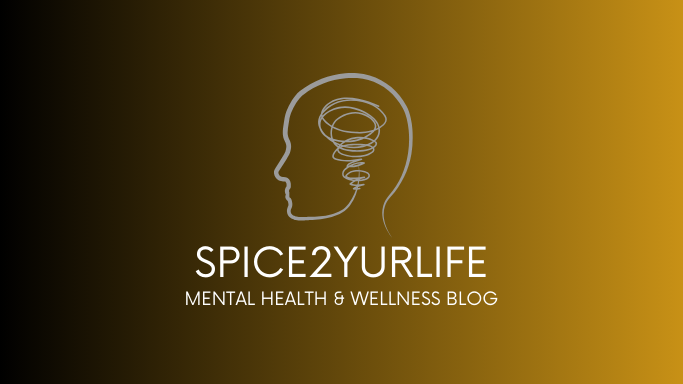Anxiety is a natural response to stress, but when it becomes overwhelming and constant, it can interfere with daily life. It’s estimated that over 40 million adults in the United States experience some form of anxiety disorder. If you’re one of them, know that you’re not alone, and there are many ways to manage and overcome anxiety.
In this blog post, we’ll explore what anxiety is, its symptoms, and provide tips and resources to help you understand and cope with anxiety.
What is Anxiety?
Anxiety is a feeling of worry, nervousness, or unease about something with an uncertain outcome. It’s a natural emotion that everyone experiences from time to time. For instance, you may feel anxious before a big presentation or job interview. However, for those with anxiety disorders, the feelings of anxiety are persistent, excessive, and often occur without a specific trigger.
Common Symptoms of Anxiety
Anxiety can manifest in both physical and emotional symptoms. While everyone experiences anxiety differently, some of the most common signs include:
-
Constant worry or fear that something bad will happen
-
Racing thoughts or an inability to concentrate
-
Restlessness or feeling on edge
-
Physical symptoms like heart palpitations, shortness of breath, dizziness, or stomach issues
-
Avoidance behaviors, where you avoid situations that trigger anxiety
-
Sleep disturbances, such as difficulty falling asleep or staying asleep
If you’re experiencing any of these symptoms regularly, it’s important to address them and seek help.
Tips for Overcoming Anxiety
-
Practice Mindfulness and Relaxation Techniques
Mindfulness is the practice of being present in the moment without judgment. It can help you break the cycle of anxious thinking by focusing your attention on the here and now. Techniques like deep breathing, progressive muscle relaxation, and guided meditation can significantly reduce anxiety.
-
Deep Breathing: Slow, deep breaths can trigger the body’s relaxation response, helping to calm the mind. Try inhaling for four seconds, holding for four seconds, and exhaling for four seconds.
-
Progressive Muscle Relaxation: This involves tensing and relaxing different muscle groups in the body. It helps release tension and promotes relaxation.
-
Exercise Regularly
Physical activity can be a powerful tool for managing anxiety. Exercise increases the production of endorphins, the brain’s natural feel-good chemicals, and can help reduce stress. Even a brisk walk or short jog can help improve your mood and energy levels.
-
Develop a Routine
A structured daily routine can help you feel more in control and reduce uncertainty, which often fuels anxiety. Plan your day with a focus on time management, and ensure you’re incorporating activities that bring you joy, relaxation, and a sense of accomplishment.
-
Limit Caffeine and Sugar
Caffeine and sugar can increase symptoms of anxiety by stimulating the nervous system. If you’re prone to anxiety, try reducing your intake of caffeinated beverages and sugary snacks, and see if it helps alleviate some of your anxiety symptoms.
-
Get Enough Sleep
Sleep is essential for both mental and physical health. Chronic sleep deprivation can worsen anxiety symptoms. Aim for 7-9 hours of quality sleep each night. Establish a consistent sleep routine, and create a relaxing environment to help you unwind before bed.
-
Challenge Negative Thoughts
Anxiety often stems from negative thought patterns, such as catastrophizing or focusing on worst-case scenarios. Cognitive Behavioral Therapy (CBT) techniques can help you challenge these thoughts by asking yourself if they are based on facts, and then replacing them with more balanced, positive thoughts.
-
Reach Out for Support
Talking to someone about your anxiety can be incredibly helpful. Whether it’s a trusted friend, family member, or therapist, sharing your feelings can help you feel heard and understood. Professional therapy, such as CBT or exposure therapy, is often effective for managing anxiety disorders.
Resources for Managing Anxiety
-
Therapy and Counseling
-
Cognitive Behavioral Therapy (CBT): This is a proven approach to managing anxiety by changing negative thought patterns and behaviors.
-
Exposure Therapy: Gradual exposure to anxiety-provoking situations in a safe and controlled environment can help desensitize you to triggers.
-
Mindfulness-Based Cognitive Therapy (MBCT): This combines mindfulness techniques with cognitive therapy to prevent relapse in anxiety and depression.
-
-
Self-Help Books
-
“The Anxiety and Phobia Workbook” by Edmund J. Bourne: A comprehensive guide that provides exercises and strategies for managing anxiety.
-
“The Feeling Good Handbook” by David D. Burns: This book focuses on cognitive-behavioral techniques to help you challenge negative thinking patterns.
-
-
Apps for Anxiety
-
Headspace: A meditation and mindfulness app that provides guided exercises to reduce stress and anxiety.
-
Calm: This app offers relaxation techniques, sleep stories, and mindfulness exercises to help calm anxiety.
-
Wysa: An AI-powered app that offers CBT-based techniques for managing anxiety and stress.
-
-
Support Groups
-
Anxiety and Depression Association of America (ADAA): The ADAA offers online support groups and resources for individuals struggling with anxiety.
-
National Alliance on Mental Illness (NAMI): NAMI offers peer-led support groups for individuals and families affected by mental health conditions, including anxiety.
-
-
Helplines and Crisis Support
-
National Suicide Prevention Lifeline: 1-800-273-TALK (1-800-273-8255) for immediate support.
-
Text HOME to 741741 for crisis support via text with a trained counselor.
-
Final Thoughts
Anxiety can feel isolating, but it’s important to remember that help is available. By understanding anxiety and implementing strategies like mindfulness, exercise, and therapy, you can manage its effects and lead a fulfilling life. If you or someone you know is struggling with anxiety, reaching out for support is a courageous and essential first step. You're not alone in this journey, and resources are there to help you regain control and peace of mind.
Remember, progress takes time. Be patient with yourself, and keep moving forward one step at a time.







No comments:
Post a Comment